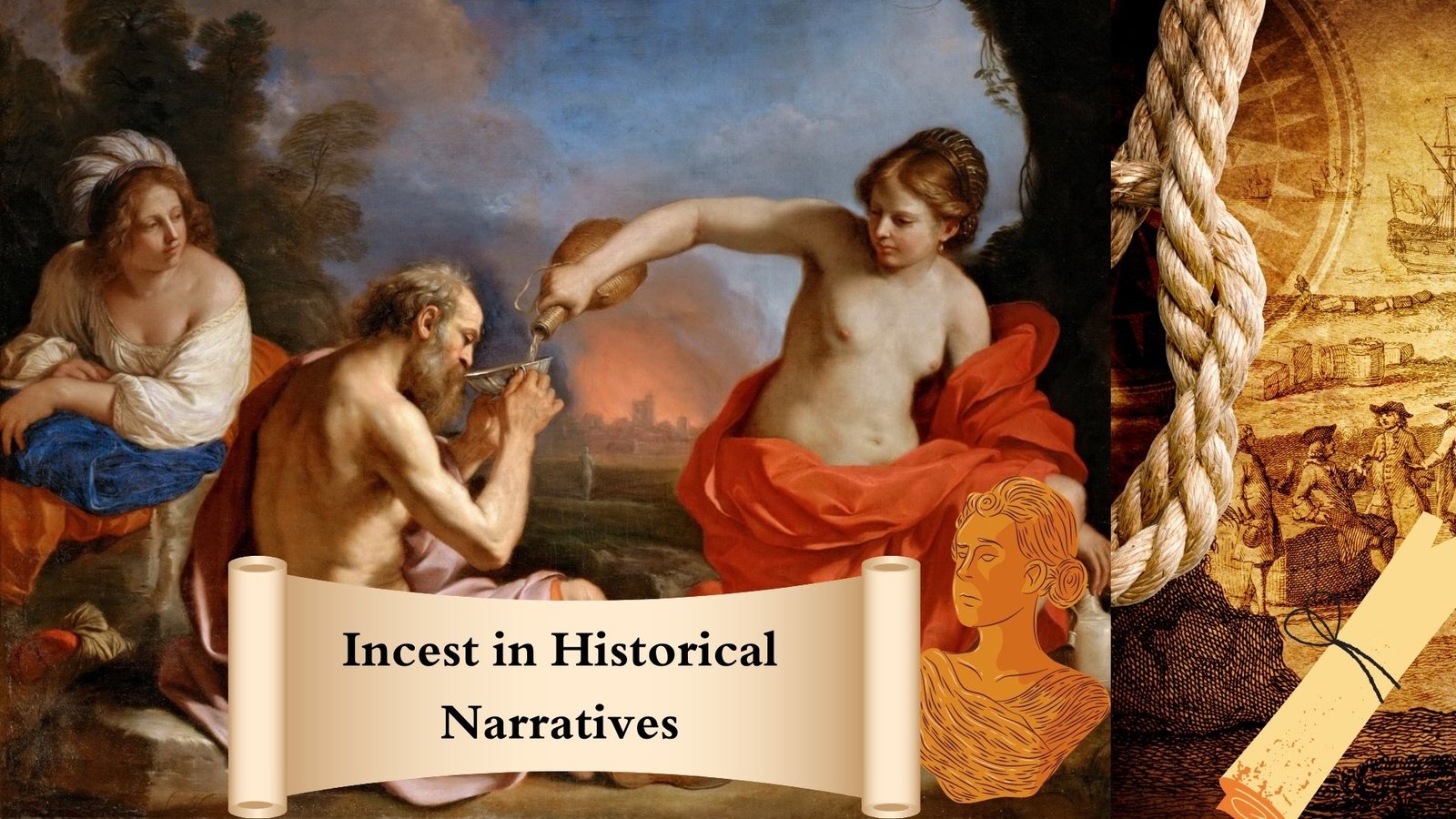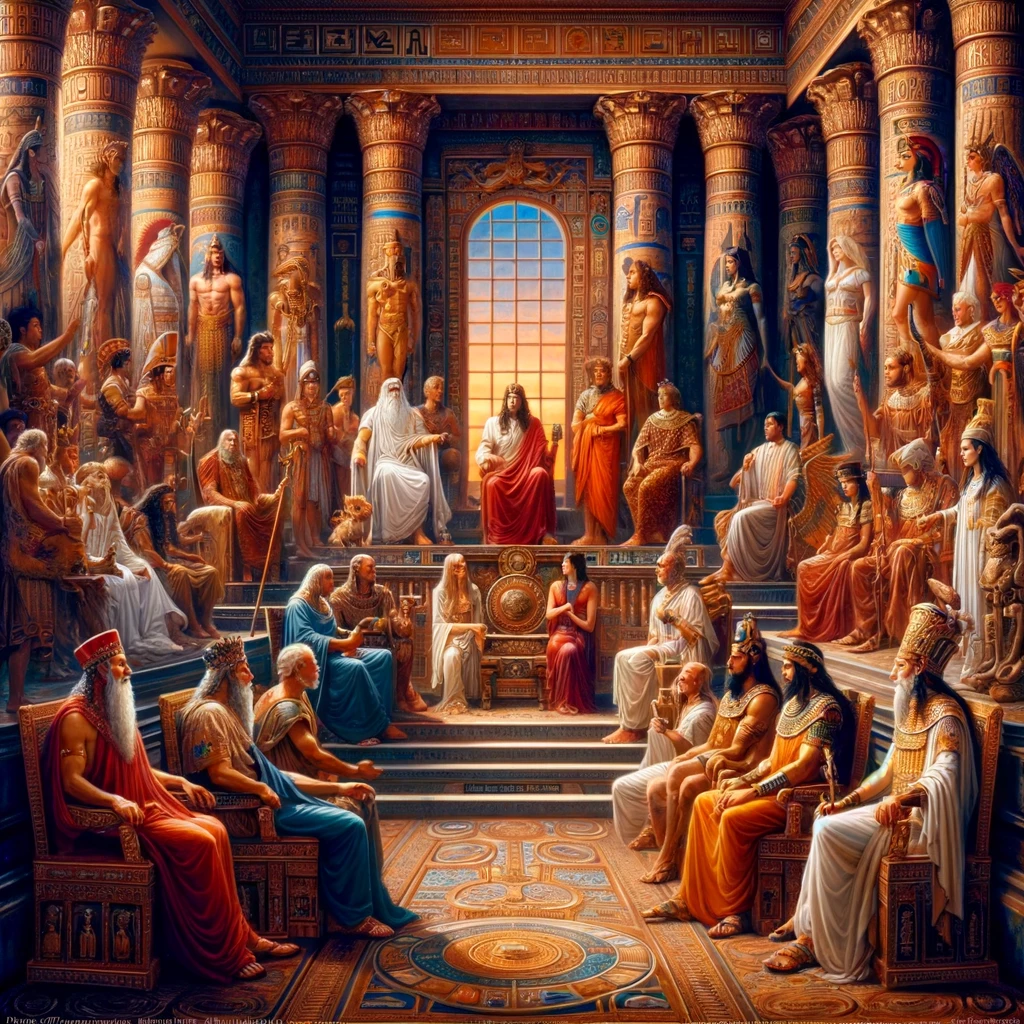
Zeus sleeping with Persephone is not even the wildest story in ancient myths. It is pretty well known that Isis and Osiris (two principal Egyptian gods) were married to each other and had multiple children, even though they were twin brothers and sisters. It is less known but reported in ancient texts that they began copulating and even conceived a child while still in their mother’s womb.

The Complex Relationships In ancient myths
In ancient myths, that thing is a rule rather than an exception—myth writers like to provide some form of creation narrative. A big problem with making up a creation narrative is that you have to start with a small number of people, and they inevitably have to sleep with each other in all possible combinations.
More commonly, though, mythmakers come out and say it outright. Keep in mind that most ancient cultures were far less sexually repressed than us Judeo-Christian. (Incest was generally frowned upon everywhere, but the whole subject of reproduction was usually approached a lot more casually / practically.)
The Complex Relationships of Egyptian Gods
Egyptian pharaohs took these myths to heart and, at one point, were practicing incestuous marriage quite openly and aggressively. They saw themselves as gods/descendants of gods, making children with commoners was out of the question, and intermarrying with foreign dynasties was difficult because there were few foreign dynasties of comparable stature. That left inbreeding.
Right around the time when Persephone was being chased around Olympus by both her dad Zeus and her uncle Hades, several hundred miles to the south, Egypt was ruled by the 18th Dynasty pharaoh Akhenaten.
Egyptian pharaohs and divine justification for incest
Akhenaten wanted a male heir, but his wife (the famous Nefertiti) kept producing daughters. Akhenaten’s solution was simple: he started working through his female relatives. (He was probably inspired by the example of his father, Amenhotep III, who had included two of his daughters in his sizable harem.)
Akhenaten’s Quest for an Heir
He had an heir, Tutankhamun, with his sister, but the boy was sickly. Among his daughters, he impregnated at least two, possibly three, regardless of their ages. He gave one daughter to Smenkhkare in marriage and intended the other for Tutankhamun.
First, he made an heir – none other than Tutankhamun – by impregnating his sister. But, unsurprisingly, the boy turned out to be sickly (among other things, he had multiple congenital deformities and could not even walk without a cane), and further work was needed. Of the four daughters who got anywhere near puberty within his lifetime (in order from oldest to youngest, Meritaten, Meketaten, Ankhesenamun/Ankhesenpaaten, and Nefernefernuaten),
He impregnated at least two and possibly three, without much concern for their ages (daughter #2 died around the age of 10, possibly in childbirth, and daughter #3 may have been even younger since she was at most 14 and more likely closer to 11 at the time of her father’s death.) Unfortunately for him, those also bore him girls. He gave away one daughter in marriage to someone named Smenkhkare (an obscure relative, possibly his brother) and earmarked the other for Tutankhamun.
The Tragic Lives of Akhenaten’s Children
Shortly after that, most adults in this odd family (Akhenaten, his wife, his sister, his brother, and his eldest daughter) managed to die one after another in swift succession from some combination of malaria and hereditary genetic diseases – most likely before reaching 40 in each case – leaving only Ankhesenpaaten, age 12–14, and her half-brother Tutankhamen, age 10, in care of their maternal grandparents. The two were promptly married to each other and had two stillborn children. When Tutankhamun also died at the age of 19, Ankhesenpaaten married his (and her) grandfather.
The saga no doubt would have continued, but, unfortunately, both the girl and her husband/grandfather then also died, passing the title of the pharaoh to an unrelated Egyptian general. Modern Egyptologists are trying to untangle all this with the help of DNA (we have mummies of several prominent players of this cluster****). Still, they are having a hell of a time – there are a few other possible interpretations.
It’s hard to distinguish between them because everyone is closely related to everyone. It does not help that subsequent generations of pharaohs worked hard to erase the entire dynasty from the historical record. (Not because incest was so abhorrent to them but because Akhenaten was a bit of an iconoclast, and he tried to establish a new religious cult, temporarily supplanting traditional gods.)
Cleopatra
The other famous Egyptian princess – Cleopatra (or, more precisely, Cleopatra VII) – was nearly as familiar with incest as was Nefertiti (her experience was perhaps not quite as intensive as Nefertiti’s, but “deeper,” with a history of sibling and first-cousin marriages going back many generations.) Her parents, Ptolemy XII, and Cleopatra V, were either brothers and sisters or at least first cousins. Her paternal grandfather, Ptolemy IX, married two of his younger sisters, one after another, and possibly had children with both (though Ptolemy XII himself was likely an illegitimate son with some other woman).
Cleopatra VII married both of her younger brothers, one after another, and had a son at some point. She was, at the time, having a love affair with (already married) Julius Caesar, so she did the political calculations and concluded that it was more convenient for the boy to be the illegitimate son of the most powerful man in the Roman Empire. Not all Romans were convinced
https://uniquesaga.com/what-if-hitler-won-world-war-2/






1 thought on “The Startling Truth Behind Incest in Historical Narratives Myths and Royalty”